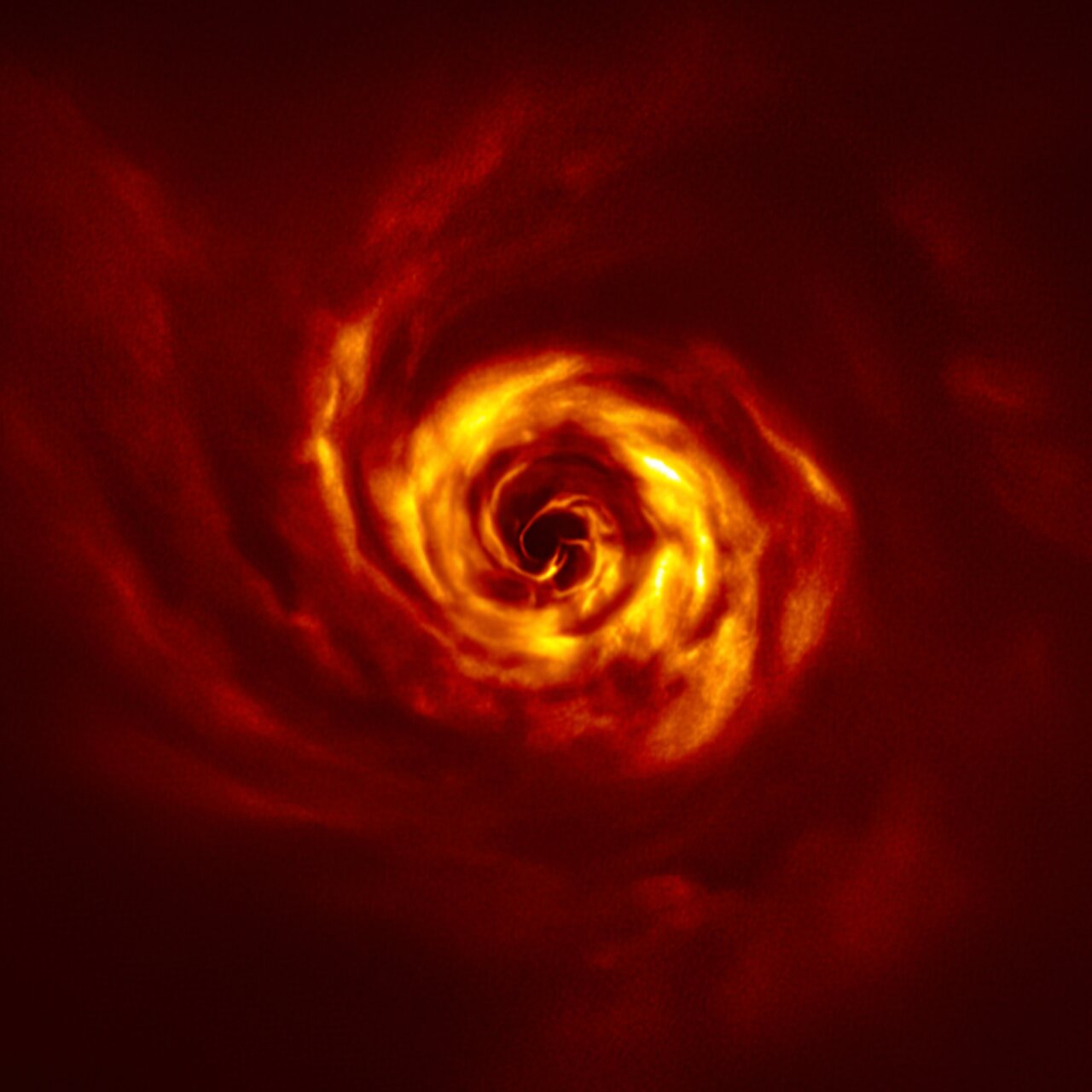How a planet grows up
AB Aurigae, 520 light-years from Earth in the constellation, Auriga (the charioteer), is far from grown up: the star is a so-called Herbig Ae/Be star, which has not yet started to fuse hydrogen in its core. Despite its youthful age of only a few million years, however, it already appears to be concerned with trying to produce offspring. And so, as humans are wont to do, they don’t look away considerately, but instead direct their eyes (and their telescopes) right at the action, full of curiosity.
In doing so, the Very Large Telescope of the European Southern Observatory (VLT) has found clear evidence for the development of a planetary system. In the dense dust and gas disk circling AB Aurigae, the astronomers discovered a distinctive spiral structure with a twist. This appears to mark the spot where a planet is likely forming. This observed feature could thus be the first direct evidence for the formation of a baby planet.
“Thousands of exoplanets have been identified so far, but little is known about how they form,” says Anthony Boccaletti, who led the study from the Observatoire de Paris, PSL University, France. Astronomers know that planets are born in dust disks surrounding young stars. But scientists don’t yet know the exact process. It takes much too long to be able to follow it live. Thus, scientists need to take as many snapshots as possible from the different individual stages of development. “We need to observe very young systems to really capture the moment when planets form,” says Boccaletti. Up to now, astronomers had not been able to record images of these young disks with sufficient resolution or depth of detail.
Spirals, like those the VLT found in AB Aurigae, point to the existence of baby planets, because these spirals “churn up” the gas, creating “disturbances in the disk in the form of a wave, similar to the wake of a boat on a lake,” explains Emmanuel Di Folco of the Astrophysics Laboratory of Bordeaux (LAB), France, who also participated in the study. While the planet rotates about the central star, this wave becomes a spiral arm. The very bright, yellow twist near the center, approximately the same distance from its star as Neptune is from the Sun, is one of these disturbances where, according to the team of researchers, a planet is in the process of growing up.

